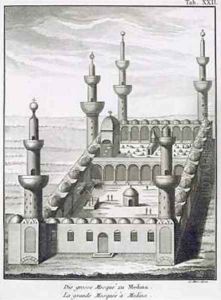Niebuhr, Carsten Paintings
Carsten Niebuhr was a German mathematician, cartographer, and explorer in service to the Kingdom of Denmark, known primarily for his participation in the Royal Danish Arabia Expedition (Danish: Den Arabiske Rejse). He was born on March 17, 1733, in Lüdingworth (now a part of Cuxhaven, Lower Saxony, Germany), the son of a farmer. Despite the modest circumstances of his early life, Niebuhr demonstrated a keen intellect, particularly in mathematics, and was able to attend the University of Göttingen.
In 1761, Niebuhr joined the Royal Danish Arabia Expedition, which was a scientific undertaking initiated by King Frederick V of Denmark. This journey aimed to gather information about the Arabian Peninsula, which was then largely unknown to Europeans. The expedition included several scholars and scientists, and Niebuhr served as the mathematician and cartographer. The team set out from Copenhagen and traveled through the Mediterranean, stopping at Egypt, then moving on to the Arabian Peninsula, reaching Yemen and areas that are now part of Saudi Arabia.
Tragically, the expedition faced numerous hardships, including the deaths of all members except Niebuhr. Despite the challenges, he continued the work, collecting valuable geographical, cultural, and historical information. He was the first European to detail the ruins of the ancient city of Persepolis in modern-day Iran, providing precise drawings and descriptions.
After returning to Denmark in 1767, Niebuhr published several accounts of his travels and findings, most notably 'Description of Arabia' (1772) and 'Travels through Arabia and Other Countries in the East' (1774-1778). His works provided a wealth of data that contributed significantly to European knowledge of the Middle East and were used in various scientific fields, including geography and linguistics.
Niebuhr's observations were not only valuable for their scholarly content but also for the accuracy and detail with which he recorded them. His cartographic skills were particularly noteworthy, as he produced maps that were far more precise than any available at the time.
After his travels, Niebuhr settled in Denmark, where he worked on his publications and continued his scholarly pursuits. He lived to the age of 82, passing away on April 26, 1815, in Meldorf, Duchy of Holstein (then part of the Danish realm, now in Germany). Niebuhr’s legacy lives on through his contributions to the understanding of the Middle East and his pioneering role in scientific exploration.
